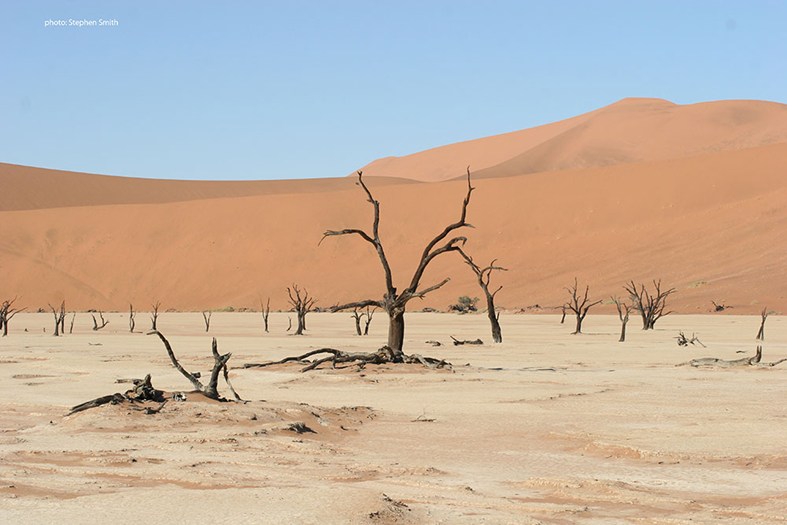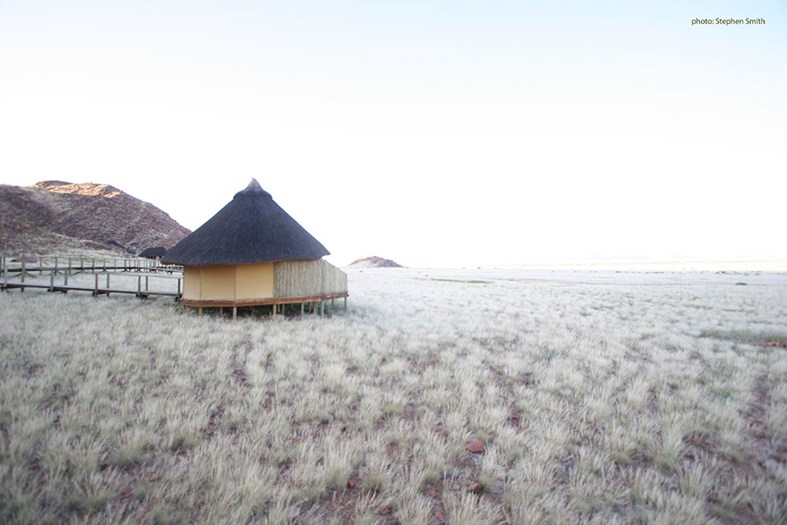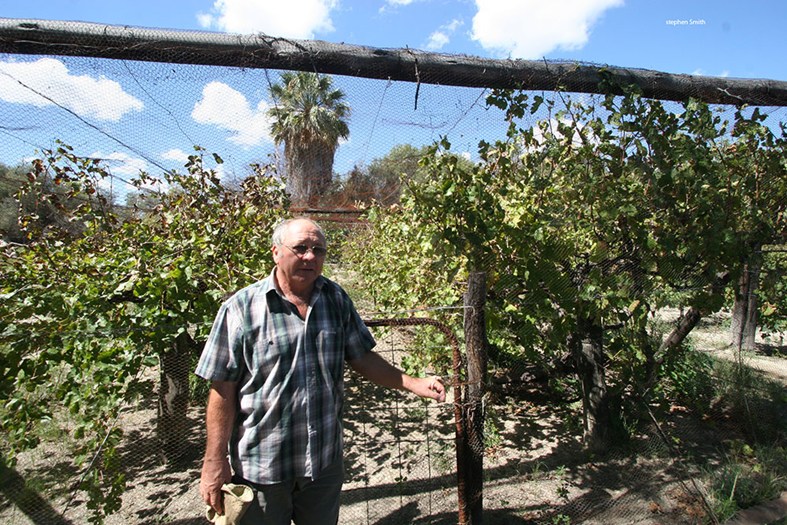SOLITAIRE, NAMIBIA - We straddle Big Daddy’s spine and nimbly walk up the giant’s back to get a better view of the sun rising over the Namib Desert. When we reach the top of one of the world’s tallest sand dunes, we are rewarded with a breathtaking view of the world’s oldest desert spreading out in all directions before us.
Awesome is the only word that can describe what I’m seeing in the barren valley below — the sand is being changed from first a pale pink to a deep red as the sun slowly rises higher in the sky.
I scan the horizon and see herds of oryx galloping in the distance, their spiky horns slicing the morning air as they dash through a far off veld (Afrikaan for field).

Above: The animals are always on the lookout for predators.
I’m lost in thought when a raspy voice brings me back to the group.
“Okay, how do we get down?” asks a fellow nervous trekker.
Linus, our guide, answers: “Easy … anytime (you’re ready) and whenever you want to finish (looking out), just walk down taking long strides, never stopping the entire way.”
“Why?” someone asks.
“Your feet might get stuck in the sand,” says Linus.
Suddenly, visions of the bleached animal skeletons we saw stacked by the roadside on our way to see Big Daddy jump back in my mind — I have no intention of letting the giant sand dune swallow me, so, fuelled by a sudden adrenaline rush, I race down, not sure if my sneakers ever touch the soft sand.
From giant sand dunes to unique desert towns to the driest winery in the world, Namibia is a collection of adventure fuelled by rugged desert scenery. And one of the most exhilarating experiences is the climb to the top of Big Daddy, which rises 325 metres into the air off the Namib Desert floor and is among the highest in the Sossusvlei, a salt and clay pan surrounded by mighty sand dunes.

Above: The dry, barren conditions of the Namibian desert are really quite beautiful.
The Sossusvlei, nestled in the Namib-Naukluft National Park where the Tsauchab River cuts through the moon-like landscape, is where we come upon a “final fuel stop” aptly named Solitaire, which looks like a vast Hollywood film scrap yard filled with vintage wrecks, animal skulls hanging off fences and rolling tumbleweed creeping past the gas station diner where hungry tourists are busy consuming game burgers and the restaurant’s “signature” apple pie.
One of the most sparsely populated countries with just 2.3 million residents, Namibia is also the most arid south of the Sahara and Big Daddy lies at Ground Zero of this parched land — in the Deadvlei, an encrusted sun-baked floor that’s a remnant from a bygone lake that, from my Big Daddy vantage point, looks rather ghostly.
The earth here is studded by twisted camel thorn trees that are centuries old and together make a surreal Salvador Dali-like painting.
After a mid-morning snack of coconut biscuits and Rooibos tea beneath one of the thorn trees, we decide to return to our lodge for some afternoon wilderness watching.
The Sossus Dune Lodge is the first government-run camp to be built inside the park. Surrounded by a golden grass plateau by the Sesriem Canyon that overlooks the distant dunes to the west, the eco-lodge on wooden stilts blends beautifully into the desert. The nearby Naukluft massif, with its jagged cliffs that skirt along a deep valley, is home to Hartmann’s mountain zebra, hyenas and skittish springbok.

Above: Eco-lodge accommodation bring you right where the action takes place.
Excitement fills the air when we arrive back at the lodge. Staff are excited by the news that a cheetah may be in the vicinity — cheetahs, we’re told, have not been seen in these parts in recent memory.
“There were cheetah tracks down by the riverbank,” says Linus, who swears he witnessed a cheetah a few weeks earlier by the canyon.
While still trying to digest that exciting news, we learn over dinner about a local winemaker who holds the reputation for the world’s driest winery. Maybe this is where the term “dry wine” came from?
Armed with that news, we head out the following morning to the Neuras Winery where we meet vintner Allan Walkden-Davis pruning some vines that are surrounded by a lush citrus grove.
The sight of a lush vineyard in such a parched place excites our tiny group — the leafy grape vines a stark contrast to the bleached desert backdrop surrounding them.
Neuras is famous for its shiraz and Walkden-Davis is especially proud of his Neuras Shiraz made from the hearty merlot-type grape that grows here.
So, we wonder, how does a vineyard flourish in such harsh conditions?

Above: Allan Walkden-Davis produces wine in some pretty harsh conditions.
Allan credits the ancient invention that he found here when he purchased the 14,400 hectare estate in 1996.
“On this site we don’t have to pump water. We have an artesian well and an original canal system,” the retired Shell Oil executive tells us.
Neuras, by the way, translates as “place of abandoned water” in the local Koikoi language and describes the full-proof water system used to harness the groundwater.
The Neuras Winery is also blessed with excellent alkaline soil and a microclimate thanks to the westerly winds off the Atlantic Ocean that bring cooler temperatures nightly so the grapes grow slower. But the other bit of serendipity strangely belongs to a water spillover from five springs located on this property. Allan explains how a farmer who erected a network of sluices in 1894 for growing a garden and table grapes mastered an irrigation technique still in use today.
Back inside his home, Allan uncorks a 2010 vintage bottle of his Neuras Shiraz. “A bottle should be drunk with good classical music, good food and good company,” Allan smiles, the notes of Mozart swirling through the room as his wife Sylvia sets the table for lunch.
The bold red Namib wine reflects the deep red desert landscape that surrounds this boutique winery and as we sample the full bodied wine we wonder what other secrets exist in the remarkable Namib Desert.
About the Author
Ilona Kauremszky is an award-winning journalist and a syndicated travel columnist. She has penned pieces for leading publishers in North America, the U.K. and Southeast Asia. She also makes appearances on TV and radio. Co-producer of mycompass.ca, Ilona is forever finding great stories in the strangest places.